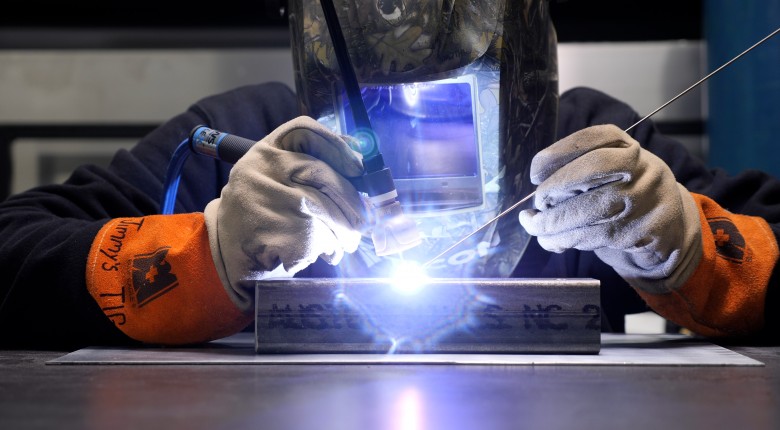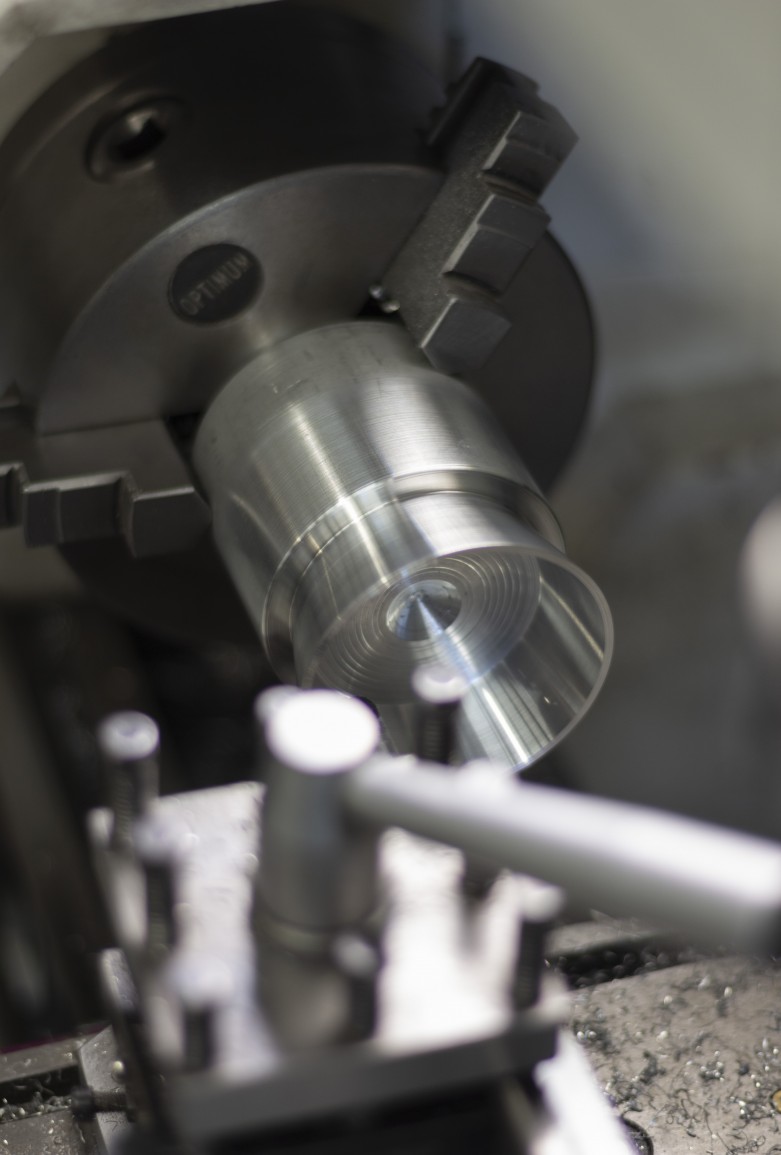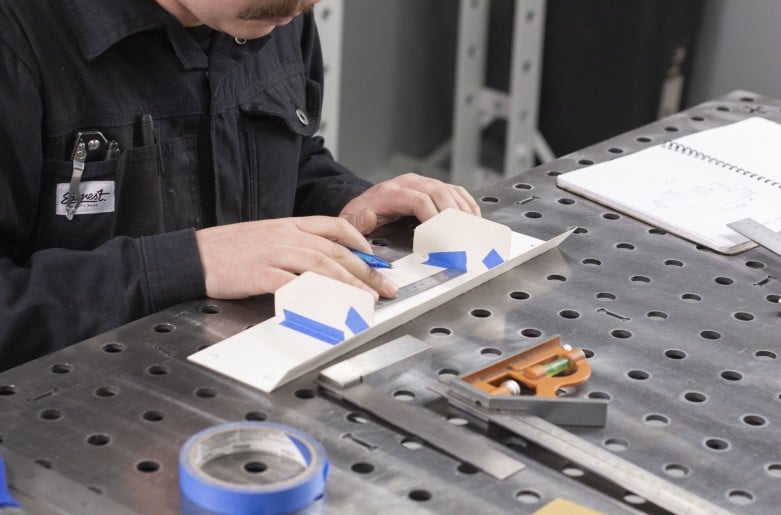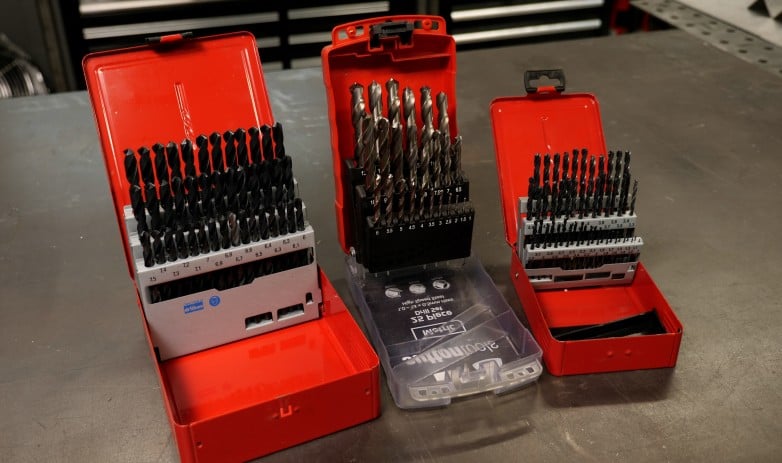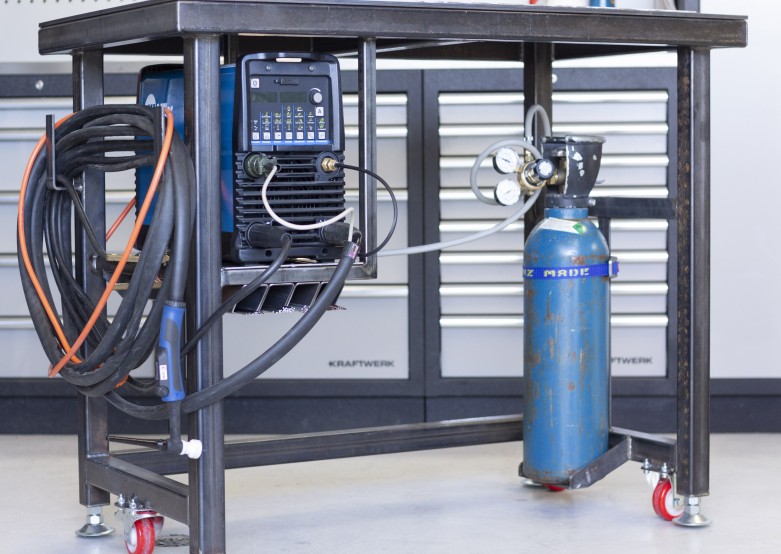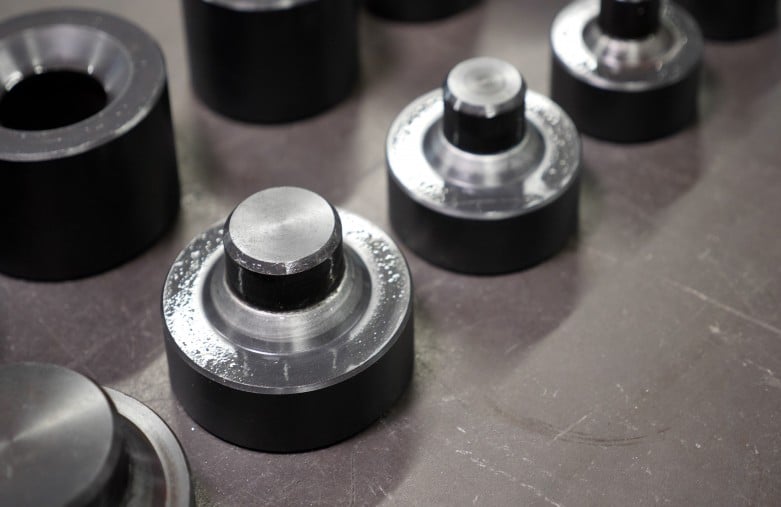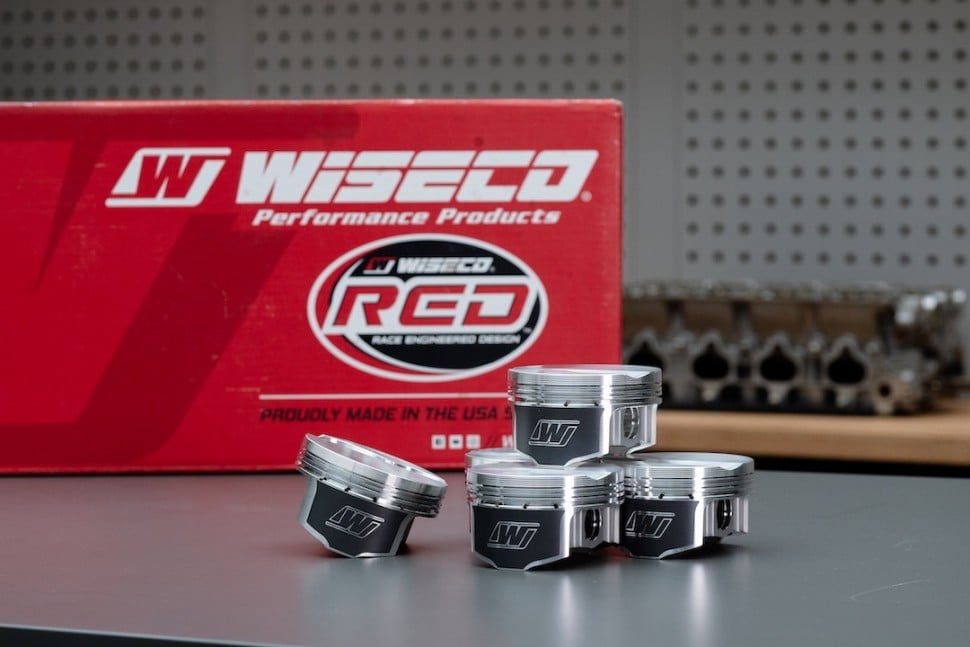Do you need a big shop space for fabrication work? What are the first tools you should buy when starting out? What about the most common mistakes newbies make when starting out in the fab game? HPA’s old in-house fabricator extraordinaire James Hull provides insight into these and many more burning questions in an effort to demystify all things motorsport fabrication.
If you’ve seen one of our High Performance Academy fabrication courses, you’ve seen James Hull, AKA Jimmy — he’s the guy on the tools, carrying out all the fabrication and welding work you see. Jimmy recently put down the TIG torch long enough to sit down with us and answer some big questions about the world of motorsport fabrication.
In this interview: Introducing Jimmy | Typical Day As A Fabricator | Some Common Fabrication Mistakes | Welding: Easy To Learn, Difficult To Perfect | Do You Have To Spend Bit On Tools To Get Started? | Top 5 Essential Tools | Fabrication Course Expectations | Anticipated Skillset | Taking Learning Further Than Just Training | Don't Rush Your Work

Let’s start with the essentials. Who are you, what’s your background, and what do you do?
My name is James Barton Hull, I’m 33 years old and I’m from Manchester, United Kingdom. I started mechanical engineering straight from school, doing my apprenticeship as a machinist and fabricator.
I currently work as the in-house fabricator for High Performance Academy, which involves designing and making the majority of custom parts for all our projects. This could mean anything from pit support equipment, trolleys, and workbenches, to an array of custom parts for the race cars.

What does a typical day working as High Performance Academy’s in-house fabricator entail?
A typical day starts with a morning meeting discussing where we’re at with the current project in hand, whether that is the race car we’re working on or what equipment we’re making.
We discuss what parts need to be designed and made, as well as problems or improvements that need to be addressed between now and the next track outing. From there we come up with a priority list for these tasks and from there, I then start to sketch and mock up some template designs for the areas needing attention. If these designs meet the needed criteria, I’ll start the fabrication process to turn them into physical parts.
As an experienced motorsport fabricator and machinist, you’ve probably seen it all, from the very good to the very poor. What’s the most common mistake you see beginner fabricators making, and how can they avoid it?
I would say the most common mistakes beginners make is not putting enough time and thought into the design stage of a project — you really need to take the extra time at the start of a project to get the design aspect nailed down.
Where motorsport fabrication differs to most general fabrication work is that it requires a lot more foresight — every part of a high-performance vehicle needs to interact and work in harmony with the rest of the vehicle.
For example, if I mount this charge pipe here, can it be easily removed? Does it interfere with anything under high loads — and by that, I mean with engine movement? Can I still access necessary parts that need regular attention without removing it? When it does need to be removed, can it be easily and repeatably reinstalled in the same place without having to clock it in a certain direction? In the event of an incident, can it be replicated easily? All these things need to be considered, especially in motorsport where we find we’re often time-constrained in a race situation.
This even extends down to what fasteners we’re using and are they readily available in our area or specially ordered? This is something that does come up when ordering parts from overseas where the country of manufacture uses the metric or imperial system. Having a mix of metric and imperial is a nightmare and definitely something we want to avoid.
The list can go on and on, but the more time we put into these initial stages makes for a better end product, saves the heartache of missing a race, and separates the beginners from the veterans.
What about a skill that comes to mind when you think of the phrase ‘easy to learn, difficult to master”, and why?
Welding definitely falls into this category. Pretty much anyone will be able — with some basic training at least — to stick two pieces of metal together using a welder. It may look terrible at the start and that’s to be expected.
It’s very easy to get disheartened at the beginning, but this is a process that takes patience and time to get the hang of, let alone produce welds that you’d be happy to show people. We’ve all been there — no one takes up welding and is instantly good, and nothing will replace time spent on the torch.
I would say it’s one of those skills where you never really stop learning and the deeper you delve and as experience lets you, find yourself welding more exotic materials that then require whole new series techniques. You are essentially learning the language of each individual metal and how it likes to be worked. There are an incredible amount of variables to consider and rarely are two welds ever the same. This also applies to the welders themselves and the techniques they learnt. There’s no wrong or right way, as long as the end result is a strong effective weld.
I’ll also add, I think it’s very easy to over criticize yourself when starting out, due to the fact we only really see amazing “work of art” welds on social media. It’s easy to overlook the fact a lot of these professional welders have devoted their lives to their trades. It didn’t come overnight and at one stage they were starting out just like you are. You’ll get there — it just takes practice and determination.
You work in a fairly large and well-equipped workshop, but that’s not something that most of us starting out are going to have access to — is motorsport fabrication a rich man’s game, or is it completely possible to start small and work your way up?
I would say it definitely isn’t a rich man’s game, and any enthusiast can start out small in their own garage. The less tools you have, just means the more you need to think outside of the box and use a little more imagination and ingenuity in order to achieve the same result. Most of the skills you’ll learn in this course can be achieved with basic tools like an angle grinder, a drill, and a bench vice.
Another key aspect here is to know the space you’re working with. Our dedicated fab room here at HPA is actually quite small in size but with careful planning and consideration, we‘ve managed to make an effective, efficient workspace in what’s realistically a normal-sized garage.
Simply filling your space up with more and more tools can be counterproductive and you might just find yourself tripping over, or constantly walking back and forth between poorly-placed machines and tools.
A good place to start is thinking about what tools work hand in hand, and are often paired together. For example, hacksaws, files, and general finishing tools should all be relatively close at hand when working at the bench vice, purely because this is where you’re going to be using them the most. We cover all this workshop layout stuff in detail in the HPA Motorsport Fabrication Fundamentals course too, by the way.
Speaking of starting small — if you had nothing but a bare workshop, what’re the first five essential items you’d pick up to get started on your fabrication journey?
There’s a lot of options here, but I’d have to say that you can’t really do much without a good battery drill, a quality drill set, a battery angle grinder, a bench vice, and a good set of files. I’m not saying that’s all you’ll ever need, of course, but it’s a really good place to start.
You’re the face, or more accurately, the hands behind the example work featured in the HPA Motorsport Fabrication Fundamentals course, so you’re well versed in the level of work that’s covered. What can a student expect to get out of taking this course?
Well, besides getting a good understanding of the different materials used in fabrication and how to properly deal with them when it comes to designing, cutting, grinding, welding, and finishing — as well as a lot more — on a higher level, you’ll likely start to view your vehicles in a different way. You’ll begin noticing potential projects that you hadn’t even considered before, simply because you’ve now got the ability to do it yourself.
That’s the beauty of fabrication, it opens up so many possibilities and you start to realize that products found on the shelf aren’t always best suited to every application, and you don’t have to buy and fit them because they’re as close as you’re going to get.
The more fabrication skills you learn the more your imagination will kick in and it’s very easy for your car or project to take on a whole other form, now that you can start to design and make parts that are exactly what you need in terms of both form and function.
Can you give us some examples of the kind of work students will be able to produce after they’ve successfully completed the course?
Students will be able to go from a completely blank piece of paper, all the way through to fitting their shiny new item into their project car — this means taking care of the design, the measuring, the cutting, the welding, and the finishing.
This might mean freeing up space in an engine bay now that brackets can be made — a classic example of this might be making a battery hold down bracket and relocating it to the rear of the car for better weight distribution. They could then fabricate a catch can and the brackets it mounts to that’ll sit where the battery once was, or get stuck into building a new exhaust system — the possibilities are endless as long as you’ve got some basic equipment and, if you get stuck, you can always refer back to the course or even ask for advice in our online community.
And what should students do if they want to take their skills further?
Yep, there are limitations to what can be taught in a fundamentals course, so when you start gaining confidence and want to further progress your motorsport fabrication skills, both the practical MIG and TIG welding courses are the next logical step. In these courses, we get far more involved in these methods and teach you everything you need to know in order to produce extremely high-quality welding working to a professional level.
Lastly, if you could only give one solid piece of advice to anyone looking to start out in motorsport fabrication, what would it be?
The one piece of advice I’d give to anyone starting out into the motorsport fabrication journey is to make sure you take the time, in the beginning, to learn the basics and to be very comfortable with them.
If we brush over the fundamentals and try to progress too quickly. We only pick up bad habits that are very hard to shake, can cause serious injury, and leave you wishing you’d taken the proper time at the start — most often because you end up wasting time and money trying to correct steps or redo work that with more planning and patience, would have been carried out correctly in the first place.
HPA’s Motorsport Fabrication Fundamentals is the ideal place to do exactly that. If you’re an absolute beginner or you have experience but want to boost your skills from the ground up, this is the perfect place to start. Click the link below for more information.
